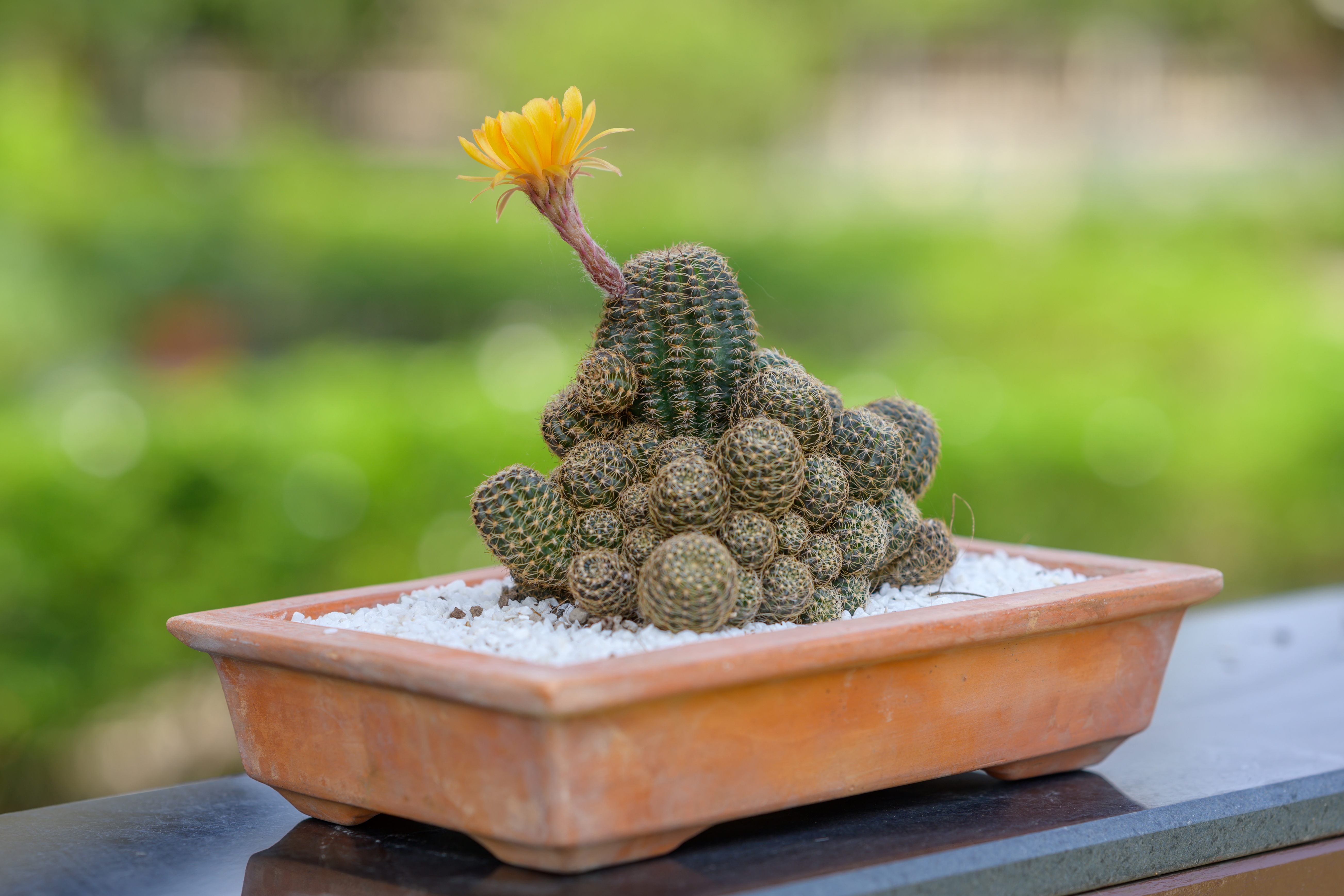Famatina Giant Cactus
(Echinopsis famatimensis)

Description
Echinopsis famatimensis, commonly known as the "Famatina Echinopsis" or "Famatina Giant Cactus," is a species of cactus native to the Andes Mountains in Argentina. As a member of the Cactaceae family, this plant is characterized by its distinctive columnar stem, sharp spines, and showy flowers. Taxonomy and Naming Echinopsis famatimensis was first described by Friedrich Ritter in 1959, based on specimens collected in the Famatina Range of the La Rioja province in Argentina. The genus Echinopsis is part of the larger tribe Trichocereeae, which includes many other cactus species such as the popular San Pedro cactus (Echinopsis pachanoi) and the Bolivian torch cactus (Echinopsis lageniformis). Description Echinopsis famatimensis is a slow-growing, tree-like cactus that can reach heights of up to 6 meters (20 feet) in its natural habitat. The stem is columnar, up to 40 cm (16 inches) in diameter, and can have up to 15 ribs that are slightly curved or wavy. The stem is green and covered in sharp, golden-yellow spines that can grow up to 8 cm (3 inches) in length. One of the most striking features of Echinopsis famatimensis is its large, funnel-shaped flowers that bloom in the summer months. The flowers are up to 20 cm (8 inches) in diameter and come in a range of colors from white to pink to red. The flowers are diurnal, meaning they open during the day and close at night, and they are often fragrant. Distribution and Habitat Echinopsis famatimensis is endemic to the Andes Mountains in Argentina, where it is found growing in rocky, mountainous terrain at elevations of up to 2,500 meters (8,200 feet) above sea level. Its natural range includes the provinces of La Rioja, Catamarca, and San Juan in Argentina. Cultivation Echinopsis famatimensis is a popular cactus among collectors and enthusiasts due to its impressive size and showy flowers. It can be grown outdoors in warm, dry climates with low humidity and minimal rainfall. In cooler climates, it is best grown in containers and brought indoors during the winter months. When grown in cultivation, Echinopsis famatimensis prefers well-draining soil and ample sunlight. It is drought-tolerant and should be watered sparingly, allowing the soil to dry out between waterings. Fertilizer should be applied sparingly, as this cactus is adapted to low-nutrient soils. Propagation Echinopsis famatimensis can be propagated by seed or by stem cuttings. Seed propagation is relatively easy, but can take several years to produce a mature plant. Stem cuttings can be taken in the summer months and should be allowed to callus over for several days before being planted in well-draining soil. Conservation Status Echinopsis famatimensis is listed as "Vulnerable" on the IUCN Red List of Threatened Species due to its small population size and restricted range. The main threats to this species include habitat loss and fragmentation due to mining, road construction, and other human activities. Conclusion Echinopsis famatimensis is a remarkable cactus species that is prized by collectors and enthusiasts for its imposing size and beautiful flowers. As a native of the Andes Mountains in Argentina, it is adapted to harsh, arid conditions and is an important component of its ecosystem. However, as with many other cactus species, it is facing threats from human activities and conservation efforts are necessary to ensure its survival in the wild. In addition to its ornamental value, Echinopsis famatimensis has a long history of traditional use among indigenous peoples of the Andes. The cactus has been used for a variety of medicinal purposes, including the treatment of fever, inflammation, and gastrointestinal issues. It is also used in traditional ceremonies and as a source of food and water in times of scarcity. Overall, Echinopsis famatimensis is a fascinating and important species of cactus that deserves attention and protection. As with all living organisms, it plays an important role in its ecosystem and has the potential to provide valuable benefits to humans. Through conservation efforts and responsible cultivation practices, we can ensure that this remarkable plant continues to thrive for generations to come.
Taxonomic tree:







